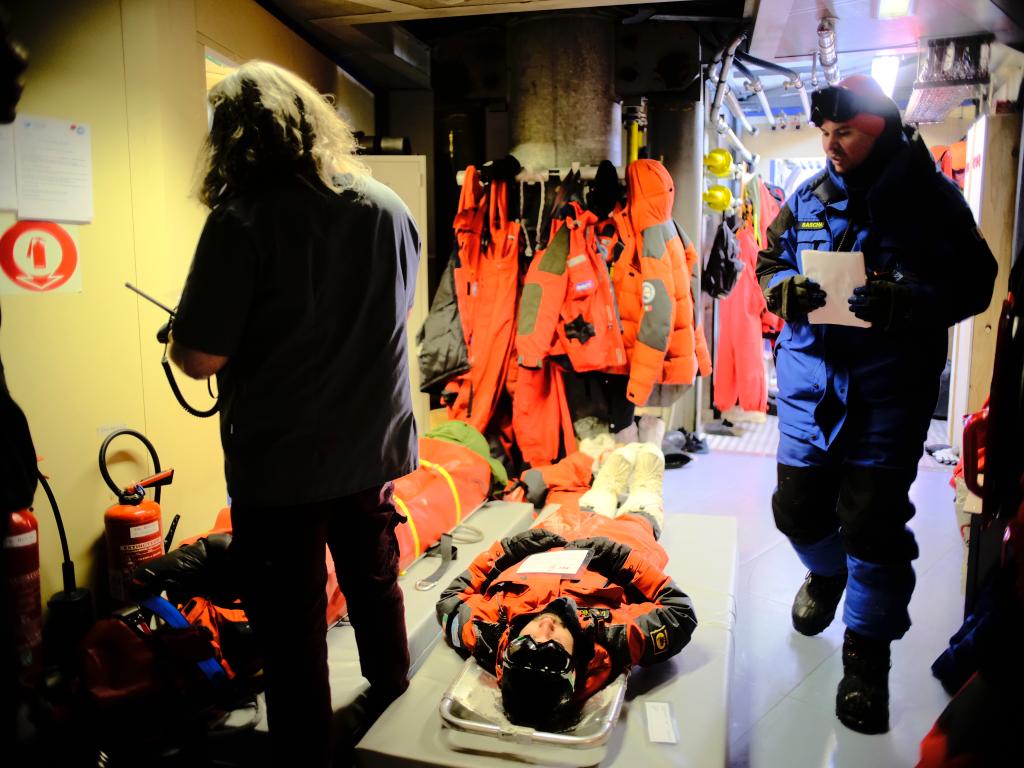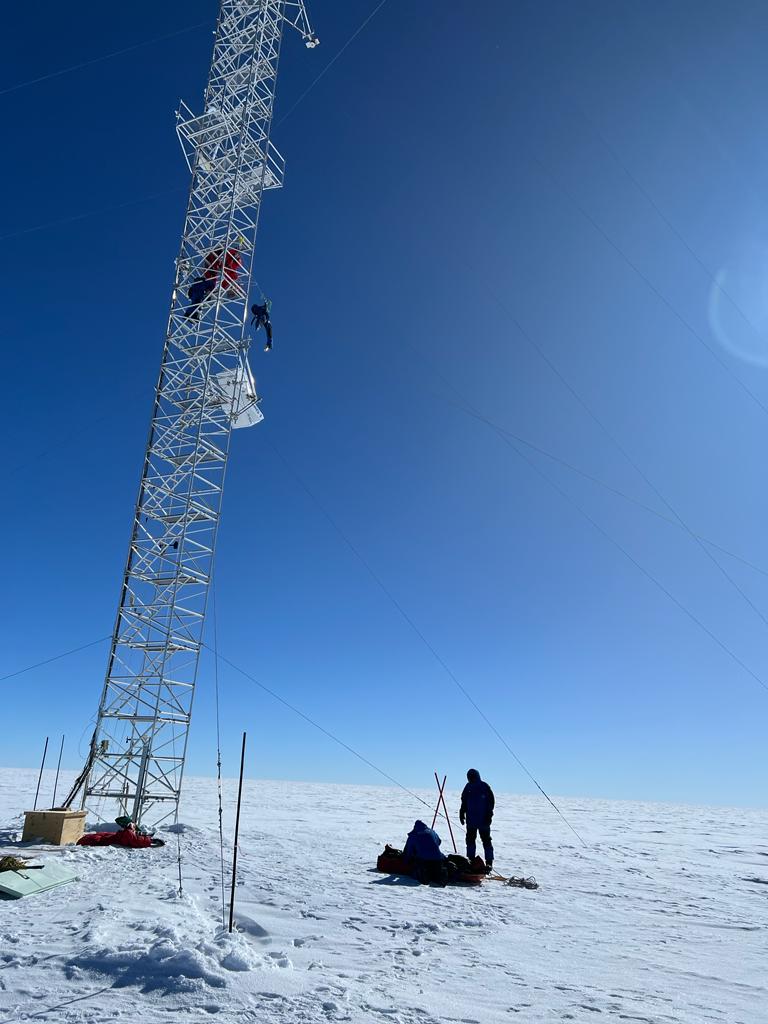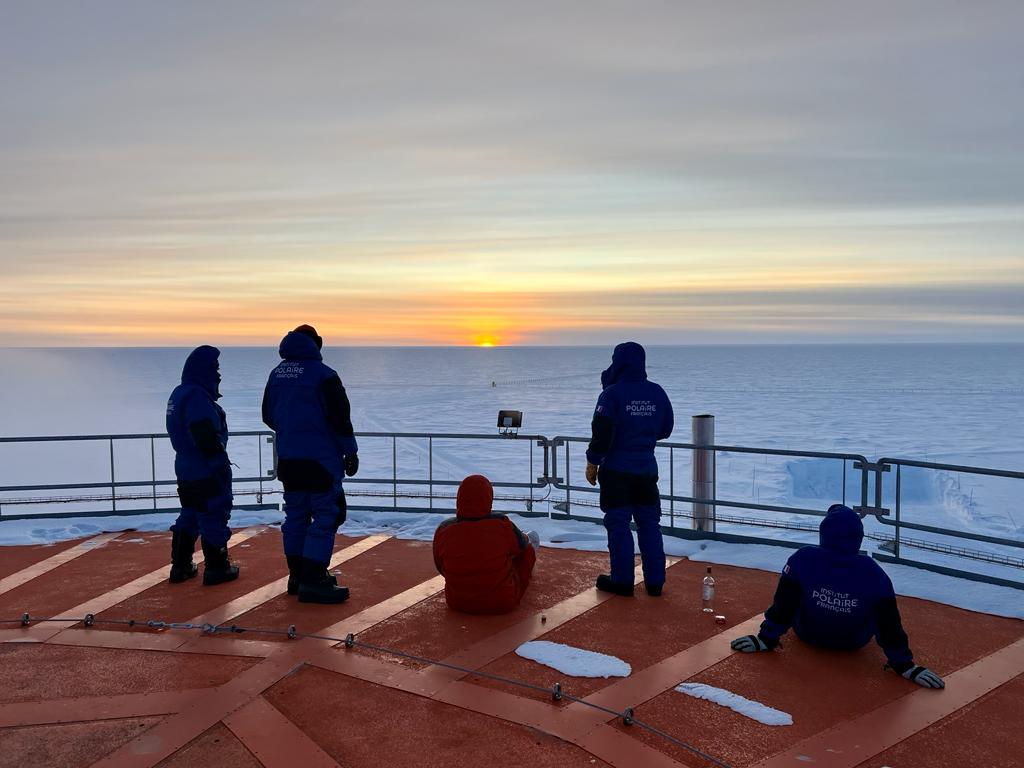Put on sunscreen and sunglasses. During the summer campaign and some weeks beyond, the Sun never goes down at Concordia. In the past three months, the temperature ranged between –45°C and –25°C, although the wind chill is important here and it can drop the temperature on the skin significantly. From when I am writing this blog, it is less than one week until the DC-19 crew (our code, combining the place: Dome-C in Antarctica and the number: the 19th winter-over) will see the last plane leave. Time to reflect on the time that has passed. At the moment, preparations for the winter are in full swing, meaning a lot of food to store in containers outside (around 10 tonnes sorted by hand). Frozen samples from all kinds of experiments are packed and sent to Europe (mainly) for further analysis (from blood samples to ice cores dating back over 1000 years). Many scientists finish their hand-overs with the departing colleagues and like the previous two months, Concordia station remains a busy place. Currently there are about 30 people left at the station (from a maximum of just over 60).
During the three months of summer, the days are very structured. Breakfast is from 7:00 to 8:00 that ends with a morning briefing by the station leader; lunch is at 12:00 and dinner at 19:30. For the biomedical research, the days start early as a lot of data is collected before breakfast. Quickly after the first weeks at Concordia passed, a routine of conducting experiments settled in. However, this routine is sometimes broken by fire drills and rescue exercises. All DC-19 crew members play a role in an event of fire and we practice such a scenario around once a week.

I am unsure if previous ESA medical doctors (leave a comment if any of you read this) had the same role, but Hannes Hagson my predecessor and I both fulfilled the first responder role. This requires to go quickly to the place where a fire is suspected, rescue potential victims, attack the fire if possible and radio our status to the station leader. In addition to being the local fire brigade, the DC-19 crew is also responsible for outside (and inside) rescue during summer and winter, and of course this is practiced as well. Most challenging is getting a victim down from the American Tower (a 40m vertical structure), or up from the 15-m deep “seismo” cave. There are many reasons for someone to need help, from medical emergencies (such as hypothermia or heart problems) to injuries and evacuation into the station by the rescue team is often the first course of action.

This year was the first exercise of a mass casualty event – in our case we simulated a plane crash. Most incoming and departing flights are logged at Concordia station during the summer campaign. There are challenging conditions for the pilots and previous aircraft incidents in Antarctica warrant the need to be prepared. So, one Saturday morning, we practiced. More than 30 people were involved and the procedure of DC-18 Doctor Fabien Farge turned out to be a success.
Leisure time at Concordia is individual, the gym is a popular place, there are many books to read and movies to watch, table football and an Italian game named Boccette are also among the frequent activities. The DC-19 electrician Vincent brought a kite and due to good weather and some wind, we ended up outside flying a red kite in the Antarctic breeze on boxing day.

After three months here, it was time to wave goodbye to the last plane we will see until November. On 7 February we started the winter-over period qone day ahead of schedule. Needless to say, the departure of the last plane is a special moment and we experience a wide range of emotions, both for the people leaving and the winter-over crew.
And then, after some hours of sorting the last fresh food that had arrived, there was silence. Concordia becomes a calm and quiet place during the winter. After three months of daylight, we saw the first sunset. The sun only dips below the horizon and there is no complete darkness (yet), but the twilight draws some beautiful colours into the Antarctic landscape of Dome C. In some weeks, the Antarctic winter will begin and the whole crew is waiting to see the night sky for the first time. I will keep you posted about the winter period at Concordia.





Discussion: one comment
buenas noches, paramount blog on lardaceous loss. such a thing helped.